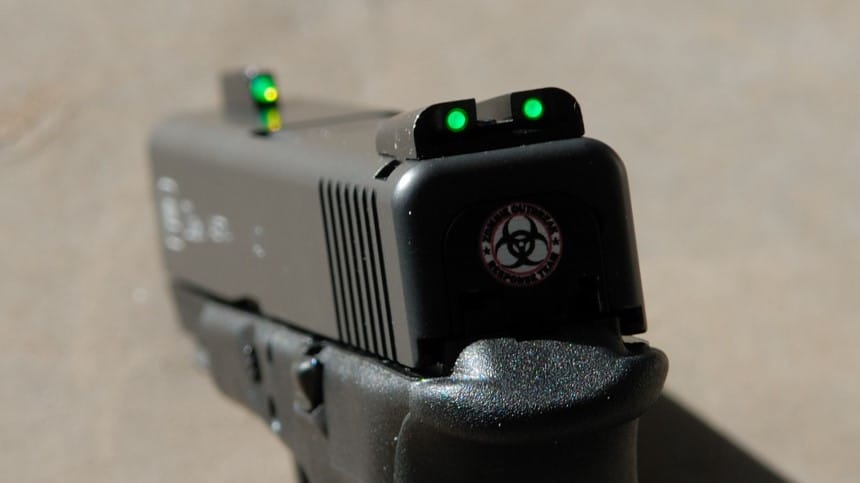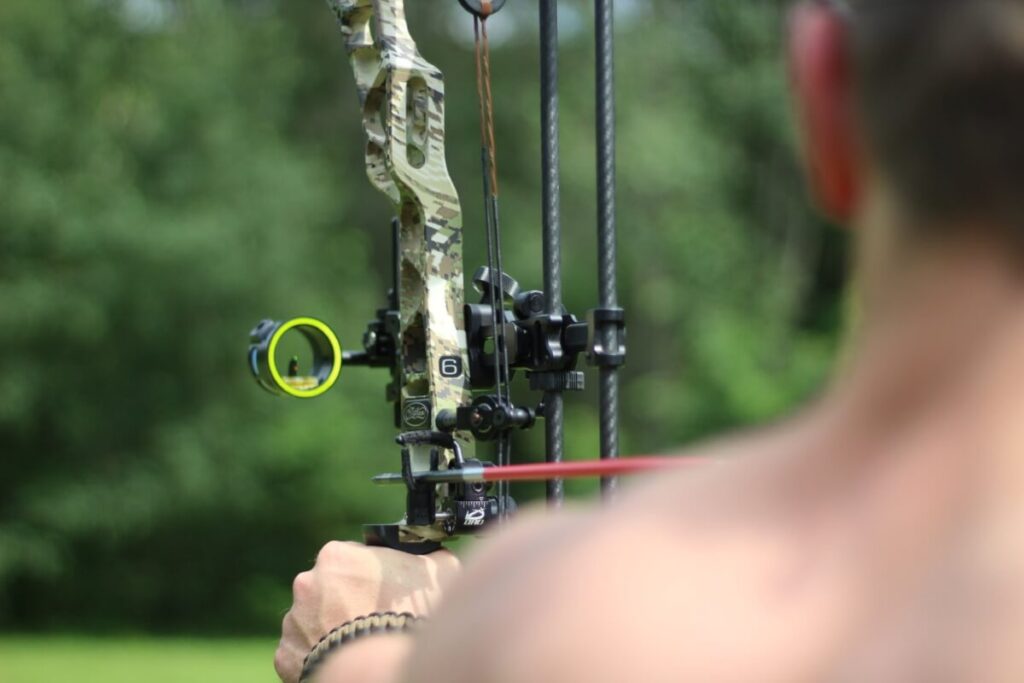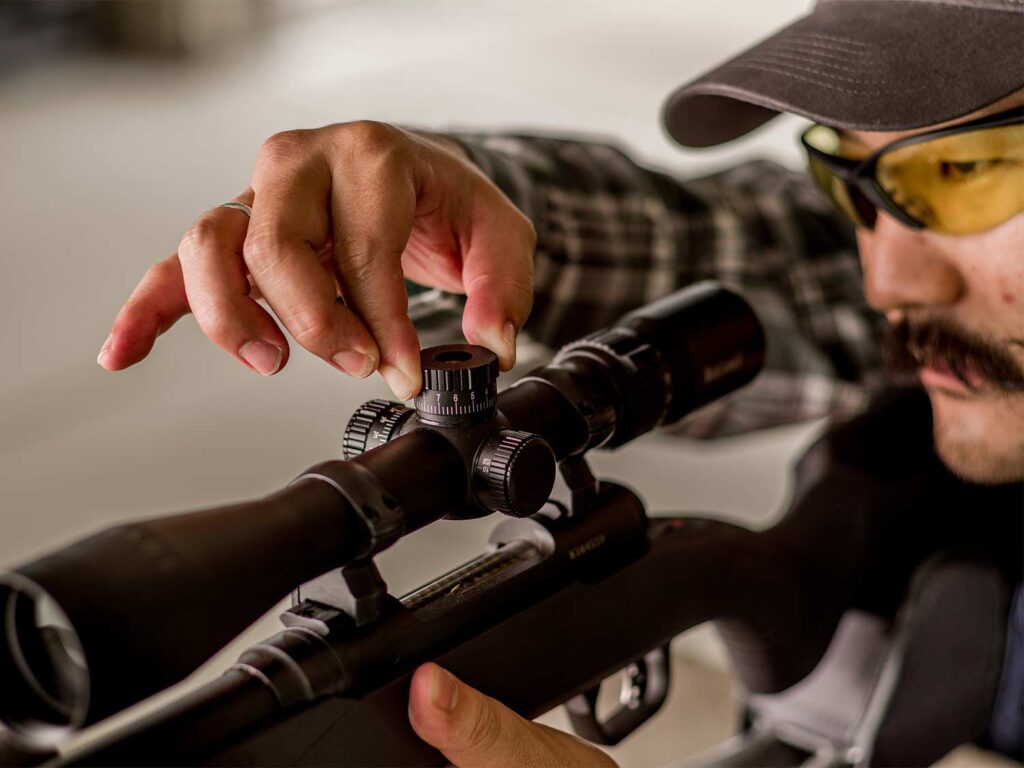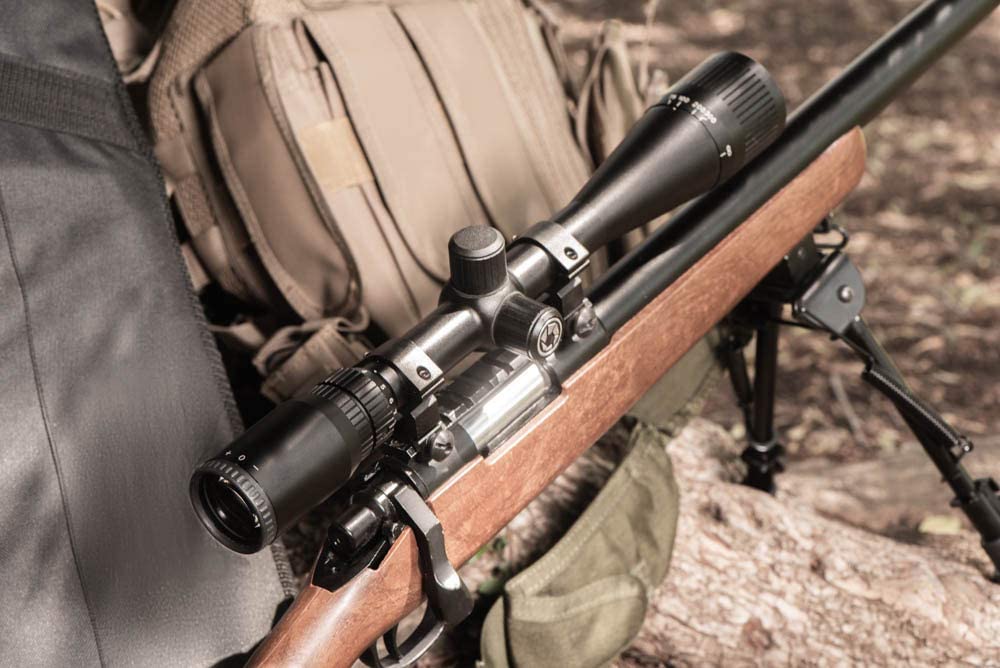

Tritium sights are a unique form of radioluminescence that allows iron sights Trusted Source Iron sights - Wikipedia Iron sights are a system of shaped alignment markers (usually metal) used as a sighting device to assist in the aiming of a device such as a firearm, crossbow, or telescope, and exclude the use of optics as in reflector (reflex) sights, holographic sights, and telescopic sights. en.wikipedia.org on firearms to glow and become more visible for the firearm operator. Their light relies on electrons, which slowly emit a radioactive decay of tritium, causing the phosphor to glow as a light source. Their unique feature is that they do not rely on a battery at any point. Instead, the tritium glow continues to shine for as long as the radioactive material’s decay process is still ongoing.
But how long do tritium sights last? And how reliable are they compared to other alternatives?
Tritium sights are designed to provide a long-lasting glow in dim light or night light, although they are also active during daytimes but will not be noticed by the firearm’s handler. To counteract this daylight absence, some manufacturers have started to incorporate fiber optics Trusted Source Radioluminescent lighting technology - NASA/ADS The glow-in-the-dark stereotype that characterizes the popular image of nuclear materials is not accidental. When the French scientist, Henri Becquerel, first discovered radioactivity in 1896, he was interested in luminescence. ui.adsabs.harvard.edu in combination with tritium to provide high-contrast firearm sights visible in daylight. Although tritium night sights are both durable and popular, they have advantages and disadvantages that need to be considered before their use.

When discussing how long do tritium night sights last, we must praise tritium lights for their lifespan of approximately 12 years.
Exciting phosphor with the help of radioactive material is the key to tritium night sights. With no electrical energy to help them along, the light will continue to glow for the entire lifespan of the radioactive process.
For example, if you were to mount the ATN ThOR 4 384 rifle scope onto your firearm, you would not have to worry about its functionality for the next decade.
Not only are they a relatively cheap addition to your firearm, but they also provide a high level of safety – especially during the night. For decades, iron sights were used in deer hunting because they could provide visibility at significantly large distances. Although lasers may seem more ‘high tech’ to new generations, tritium sights have accompanied firearm users through thick and thin, sometimes saving them in potentially dangerous situations.
These night sights’ iron structure is exceptionally sturdy and can withstand any kind of weather condition and transportation. Once you place them on your firearm, you will feel safe in their long shelf-life and versatile use.
Tritium night sights have a short learning curve. There are no buttons or switches to fiddle with and add no extra weight to mess with your already developed shooting style.
This is important because any fancy addition to your firearm adds a new level of learning and uncertainty. Simplicity is the key for accurate shooting, and it also helps to significantly reduce the reaction times under challenging situations. For example, the SightMark Wraith HD raffle scope is easy to mount and has a quick learning curve.
As with any kind of night sights, some disadvantages also need to be considered before making your purchase. The more educated you are on their purpose and use, the easier it will be for you to determine whether tritium night sights are indeed for your shooting style and experience level.
Tritium itself is an expensive resource. It requires professional manufacturers with years of experience to handle and implement into night sights.
Additionally, because it is made of heavy-duty materials such as iron and steel, the price increases more than it would with a cheaper option.
Because of the chemistry that goes behind the process, the tritium sights lifespan is excellent, but it does not function during the daytime.
For some users, this is a problem since even in the daytime, a light would aid their aim and make the experience more enjoyable. Unfortunately, this is not possible with tritium sights.
Although some manufacturers are trying to fix the problem by adding other light sources to the design, this is still a substantial disadvantage of the tritium night sights option.
There are some alternatives for tritium night sights for those who may find them too simple or too costly to use. Of course, each alternative has its own pros and cons that need to be considered before making a purchase, but it is good to be informed about your options.
RDS is one of the most popular alternatives used nationwide. They are considered relatively rugged and reliable. However, they do have a battery-powered energy source which could spoil your day without any prior notice.
These sights are usually used during the daytime and have unique setting features that allow you to adjust the brightness as you see fit.
Many manufacturers have decided to switch to fiber optics because of their cheaper production time and ability to serve as a powerful light source during the day.
However, their rod has been known to break. Although it is not expensive to replace, if it were to malfunction in the middle of a shooting, it would cause a lot of trouble.
Tritium night sights have a long and reliable history behind them. Many firearm users have grown fond of their simple design and use features, especially because they provide an excellent night aid without causing any unnecessary confusion in action.
Plus, when discussing how long do tritium sights last, no other alternative has proven to be as reliable. However, even with the best intentions at advice, you need to adapt your day or night sights to suit your firearm, shooting style, environment, and time when you are most active.
The safety of you and everyone around you should always be the number one priority – so make sure always to choose safety and efficiency above fancy styles and other people’s opinions.





